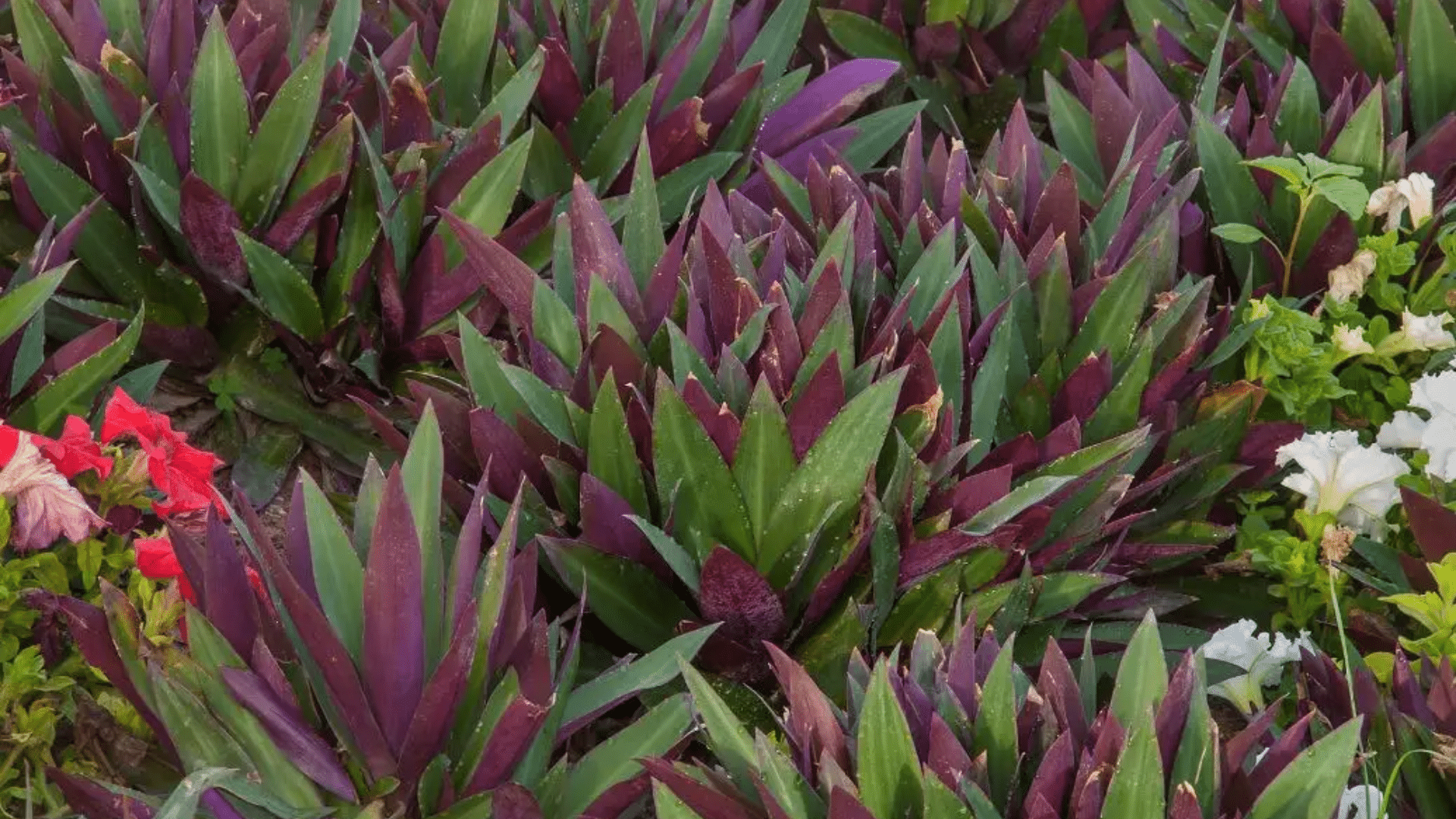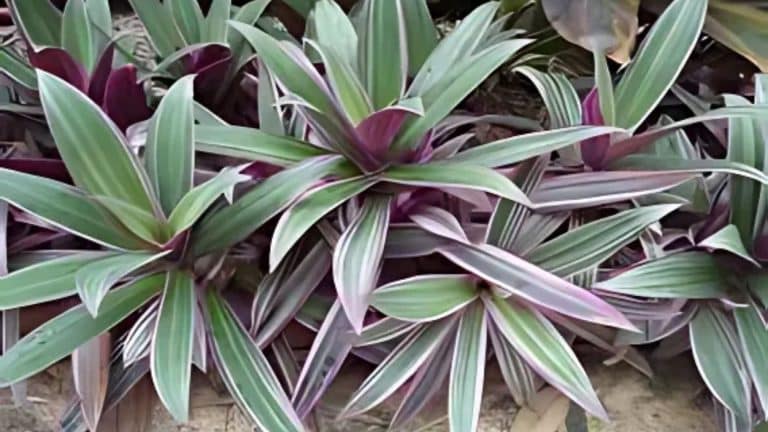Are you searching for a plant that stands out and also offers real benefits for your home or garden? The oyster plant might be just what you’re looking for.
With bold purple undersides and rich green tops, its leaves are both colorful and eye-catching, making it a favorite in gardens and indoor spaces across the country.
I first came across oyster plants last year, and I was surprised by how many ways they can be used. You can grow them indoors for decoration, plant them outside for ground cover, or even explore their use in natural home remedies.
In this article, I’ll share everything I’ve learned about oyster plants through hands-on experience and careful research. You’ll learn what they are, how to use them, and the best way to care for them.
If you’ve just started gardening or already have a green thumb, this guide will give you the tools you need to help your oyster plant grow healthy and strong.
What is an Oyster Plant?

The oyster plant, also known as Tradescantia spathacea, is a tropical plant that comes from Mexico, the Caribbean, and parts of Central America. It’s also called Moses-in-the-cradle, boat lily, or simply oyster plant because of the way its leaves fold together like a shell or boat.
The leaves grow in a rosette shape, with bold purple on the underside and dark green on top, giving it a striking two-tone look. These plants usually grow about 1 to 2 feet tall and wide, making them a great size for both pots and garden beds.
When they bloom, they produce tiny white flowers hidden inside purple, boat-shaped bracts. This adds an extra touch of beauty to their already dramatic appearance.
Oyster plants belong to the same family as spiderworts and wandering jews, which are also known for being easy to grow and colorful.
Just to note, “oyster plant” can also mean salsify, an edible root veggie, but here we’re focusing on the decorative Tradescantia spathacea variety.
How Do You Use the Oyster Plant?

Oyster plants are incredibly versatile. I’ve found many ways to incorporate them into my home and garden. Here are some popular uses for this remarkable plant:
1. Ornamental Indoor Plant
Oyster plants make excellent indoor plants thanks to their bold colors and compact size. Their green-and-purple striped leaves stand out in any space and look even more vibrant when placed near a sunny window.
They grow well in small pots, hanging baskets, or grouped with other plants. You can easily fit them on shelves or tables without taking up too much room.
They don’t need much attention, which makes them great for busy people or beginners. I keep one on my windowsill, and it continues to thrive with just weekly watering and bright, indirect light.
2. Outdoor Ground Cover
In warm areas like USDA zones 9 to 11, oyster plants grow outside all year and create a bright, colorful ground cover. Their boat-shaped leaves spread slowly but fill in spaces nicely.
I planted mine near a walkway, and within months, they formed a thick mat that looks great and keeps weeds away.
Their colors really pop against green lawns or pale flowers. If you live in cooler zones, you can still enjoy them in summer, then bring them indoors before the cold weather starts.
3. Air Purification
Like many houseplants, oyster plants help make indoor air cleaner by absorbing toxins and releasing oxygen. They pull in harmful gases through their leaves and slowly filter them out of the room.
While they aren’t the strongest air purifiers, they still help freshen up a space, especially in places with little airflow.
I’ve placed mine in my living room, and the air feels lighter and more pleasant. They’re a small but helpful addition to keeping your home healthier and more comfortable.
4. Erosion Control
Oyster plants grow strong roots that help hold soil together, making them great for spots where erosion is a problem. Their spreading leaves and thick base keep dirt from washing away in heavy rain.
I planted mine on a slope in my yard that used to erode during storms. Now, that area stays in place and looks much better too.
They’re a smart choice for hilly spots or any area where water runoff causes issues. They’re useful and beautiful at the same time.
5. Traditional Medicinal Use
In some cultures, oyster plants have been used in traditional medicine for skin problems or mild stomach issues. People would crush the leaves to make a paste or brew a tea from them.
However, this should be done with caution. The plant contains calcium oxalate crystals, which can irritate the skin or mouth in sensitive people. Always talk to a doctor before trying home remedies.
Still, it’s interesting to know how plants like these have been used in folk healing around the world.
6. Feng Shui and Symbolism
Some people believe oyster plants bring good energy and luck into a home. In feng shui, their boat-shaped leaves are thought to collect wealth and happiness like little vessels.
Even if you don’t follow feng shui, the calming colors and graceful shape of this plant make any room feel more inviting.
In many places, they also stand for protection and abundance. Having one nearby can lift your mood, especially when the space around it looks cleaner and greener.
7. Pollinator Attraction
When you grow oyster plants outside and let them flower, you may see more bees and butterflies visiting your garden.
The white flowers may be small, but pollinators love them. I’ve noticed a big increase in butterfly visits since adding oyster plants to my garden beds.
These plants help support local pollinators, which are important for other flowers and vegetables in your yard. It’s an easy way to help nature while making your garden more colorful and full of life.
How to Grow and Care for Oyster Plants?
Oyster plants are simple to grow, but they still need the right conditions to stay colorful and healthy.
They do best in bright, indirect light, which helps their purple and green leaves stay vibrant, but too much direct sun can cause burning, while too little light may make their colors fade.
Water them when the top inch of soil feels dry, and always use pots with drainage so water doesn’t build up around the roots. During winter, you can water less often since the plant’s growth naturally slows down and it doesn’t need as much moisture.
Use a standard houseplant mix with added perlite to improve drainage, and feed monthly with a diluted fertilizer during spring and summer, skipping feedings in colder months.
They prefer temperatures between 60–85°F and can handle dry indoor air, but they’ll grow better if you boost humidity with a pebble tray or humidifier.
To multiply your plant, divide the base into sections or root cuttings in water. Keep an eye out for pests and avoid overwatering, and your oyster plant will thrive.
Conclusion
The oyster plant gives you the best of both worlds because it’s both beautiful to look at and helpful in so many ways.
It can brighten up a shelf indoors with its bold colors, or it can be used outside, where it helps prevent soil erosion on slopes and garden edges.
I’ve been growing oyster plants for several years now, and they continue to impress me with how easy they are to care for and how different they look from other plants. They’re a great choice for beginners who want something eye-catching, and they also fit right in with more advanced garden setups.
Just be a little careful when handling them, since the sap can irritate your skin and might be harmful if pets or small children get too close.
With the right care and a safe spot to grow, these plants can be a long-lasting and colorful part of your home or garden.
Have you ever grown an oyster plant before? If you have questions or want to share your experience, feel free to leave a comment below!
Frequently Asked Questions
Are Oyster Plants Toxic to Pets?
Yes, oyster plants contain calcium oxalate crystals, which can irritate a pet’s mouth, skin, or digestive system if chewed or ingested. Keep them out of reach of dogs, cats, and other curious pets. If your pet shows signs of irritation, contact a vet right away for advice.
How Often Should I Repot My Oyster Plant?
You should repot your oyster plant every 2 to 3 years or sooner if it becomes rootbound. Signs include roots growing out of the drainage holes or slowed growth. Spring is the best time to repot, as the plant enters its active growing season and recovers more quickly.
Why Are My Oyster Plant’s Leaves Losing Their Purple Color?
Oyster plant leaves fade when the plant doesn’t receive enough light. Move it to a spot with bright, indirect sunlight. Avoid direct sun, which can scorch the leaves. With better light, the rich purple tones should return within a few weeks of consistent care and placement.
Can Oyster Plants Survive Winter Outdoors?
Oyster plants can stay outdoors year-round only in warm climates within USDA zones 9 to 11. If you live in a colder region, bring the plant inside before temperatures drop below 50°F. Cold weather can damage or kill the plant, as it’s not frost-tolerant at all.
How Big Do Oyster Plants Get?
Oyster plants typically grow to about 1 to 2 feet tall and wide when mature. Outdoors in the right climate, they can spread wider and form dense ground cover. Their size makes them great for small spaces indoors or as low-growing fillers in landscape beds outdoors.













